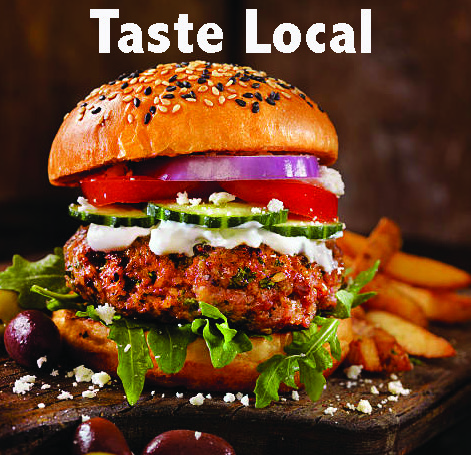
Water is ubiquitous. The Elk River runs down the middle of our valley fed by numerous tributaries–-Michele Creek, Fairy Creek, Coal Creek, Lizard Creek, Morrissey Creek and on down until finally dropping into the waters of Lake Koocanusa. Take a seat in any restaurant in town and they drop off a glass of water, a chilled bottle, and the menu as a first step in welcoming you. Walk into your kitchen, flip on the tap and pull a glass of water. Take a shower. Water your lawn. Water at our finger tips.
“If there is magic on this planet, it is contained in water.” Loren Eiseley
And if there was no water?
Last week the Yaqit?a.knuqli’it First Nation, members of the Ktunaxa, hosted a regional symposium in Grassmere at their community center. Without Water: Every drop counts, the title of the symposium, stated the question with brutal clarity. Today, we seriously need to look at our dwindling water supply The day consisted of a series of panel discussions and a tour of the local wetlands. In the early evening, the community gathered for a dinner, a keynote speech delivered by Grand Chief Stewart Phillip of the Syilx Nation, and a panel discussion to wrap up thoughts from the day. I was fortunate enough to pull an invitation to the evening events.
Our water is disappearing. The Shotanana Lake in Grassmere dried up. Gone. Not even a puddle. Look at the Elk River today. Now. Today. The gravel bar next to the West Fernie Bridge has not been under water during this spring’s runoff. The runoff peaked and is now tapering down. One of my fishing guide buddies doesn’t think there’s going to be enough water to float after August this year. Too scratchy.
Without Water becomes the existential question and one appropriately brought forward by the Yaqit?a.knuqli’it, the peoples who have lived on this land for millennium. They understand and hold a reverence for the land and the water that flows through our valleys. Their perspective is one of millennium, not a year or two, or even a few decades.
In our turbulent time, Chief Phillip’s talk rallied the group. Take action. Join “The Movement.” A slight man wearing a red golf shirt and black slacks, he started with a discussion of the Movement. The long-running resistance to development—private and industrial. The pipelines. The logging of old growth. Stopping it with occupations. With blockades. With passive resistance. Stopping the degradation of the environment. He laughed at how many times he’s been arrested.
After dinner, a panel consisting of scientific, business, public officials, and First Nations assembled at the table across the head of the room. The first question related to the growing toxicity of the water due to selenium. Mathew Gay of Elk Valley Resources explained the current efforts of the coal company to eliminate the absorption of selenium from the mine sites and both the active and passive programs they are instituting. The last question to the panel, “What did you take away from today?” The answers were primarily technical—data, diminishing supplies and such—except for Nic Milligan, the Mayor of Fernie. He said while much of the talk this day was about the science, we need to remember and keep the stories alive. Of how it was, and how it should be. The stories stand as important as the science. Stories of the lake. Stories of the river. Stories in the language of water. The data is one thing. The stories are another. They are equal.
I would add something else. Jason Gravelle obliquely touched on it, as did Heidi Gravelle.
We need to understand water is sacred. Without water, we have no life. Water is sacred.
For all the data, for all the stories, nothing will tie concern for water together more than the existential sacred nature of the medium.
H2O.
So simple. Two hydrogen molecules bonded to one oxygen in a life giving combination. All life derives from that combination of three molecules.
If anything is sacred, the simple, essential nature of water is sacred.
I have stood on the banks of the Ganges. The water moves slowly and thick with brown silt. The heat and the humidity oppressive, almost debilitating. Funeral pyres line the banks and, as the flames die down, the piles of ash are pushed into the passing waters. On occasion, a body floats by. Every year, millions of people make the pilgrimage to the Ganges, wading in, and submerging themselves in the sacred waters of that great river. The Ganges, the waters are sacred.
Yet we waste so much. In the City of Fernie, half the water entering the system leaks out the ancient pipes. The City knows this because they measure what enters the system and what exits the system into the sewage ponds. Half lost to leakage. Half. Maybe not be half. The golf course uses City of Fernie potable water to keep their fairways and greens alive. Other folks water their lawns. So maybe not half. But damn close.
We can put forward all the data we can handle and more. We can tell all the stories we want late at night in the light of campfires. Until we bind the science and the stories together with the elemental understanding all water is sacred, water will just be numbers and stories without substance.
In The Longest Silence: a life in fishing, Tom McGuane talks of how we must handle the environment going forward.
“We have reached the time in the life of the planet, and humanity’s demands on it, when every fisherman must be a riverkeeper, a steward of marine shallows, a watchman of on the high seas. We are beyond having to put back what we have taken out. We must put back more than we take out. We must make holy war on the enemies of marine life.”
For years we used the word “mitigation,” meaning an equal positive to what we plan to remove. We must begin to put back more than we take out. We must look on the effort to maintain and restore waterways a sacred duty. These waters may be defined by the numbers brought forward by the scientists and the stories told by those that live on the banks, but the life of water is sacred and should be understood as such.
And yes. It is a Holy War.
Keith Liggett has a writing career with one foot in the literary and the other seeking a different angle within traditional journalism. Read more from Keith.























